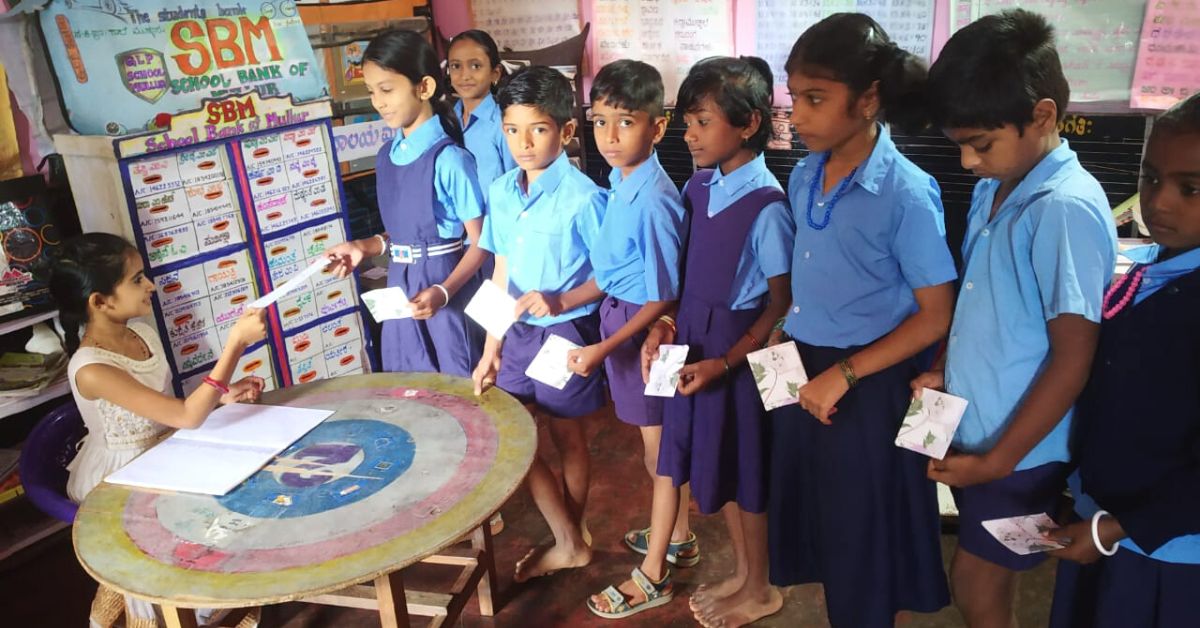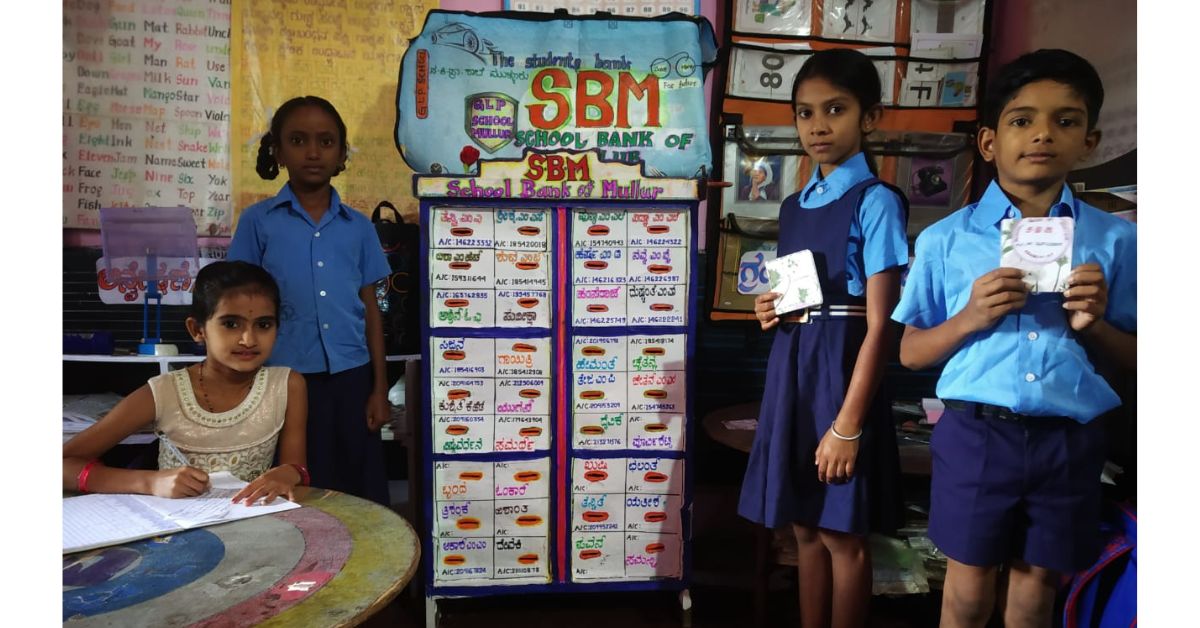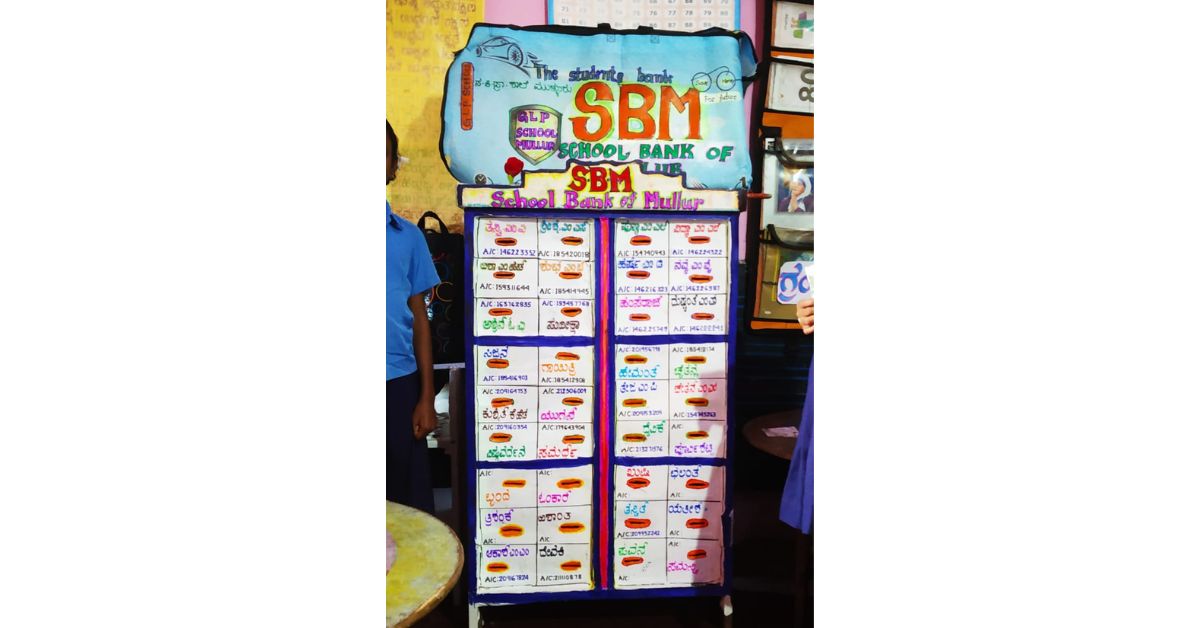S For Saving, I For Investing: School Kids Run Their Own Bank to Learn About Finance
In a government school in Karnataka, a student-run bank is teaching children the value of saving, investing, depositing, and withdrawing money. Here’s a look at the School Bank of Mullur, started by teacher C S Sathish.

While diving deep into the theory and study of various subjects, our schools don’t often focus on imparting the type of practical education that would be useful in the day-to-day adult world.
But Mr C S Sathish, a teacher at the Government Lower Primary School of Mullur, a small village in Karnataka, wished to impart lessons that would remain with his students for life. For this, he came up with the idea of starting a bank in the school so the 37 students of Class 5 could get hands-on experience of the banking system.
With the School Bank of Mullur (SBM), founded in May of this year, students are learning the processes and importance of saving, investing, depositing, withdrawing and earning back interests.
It was conceptualised by 39-year-old Sathish, who has been a teacher for 16 years, based on a chapter on banking. He wanted to explain the concept of banking, and especially saving money, in a more detailed manner.
“I want the kids to be independent, and learn how to manage their finances, so they can be more responsible with the money their parents give them for expenses. My main motive was to teach them the concept of saving,” Sathish tells The Better India. “In the future, I hope all this banking knowledge is useful to them and that they can handle their money in a smarter manner.”
To instil a sense of ownership, each student has their own personalised locker where they can deposit money. They’re also given handmade passbooks where teachers note down the amount of money they have saved. If they wish to withdraw money, they have to fill in a handmade challan and withdraw money through a handmade cheque.
Administratively as well, the bank is handled by students, with Tanvi MA as manager, Punya as accountant, and Vidya ML as cashier.

“I come to school early each morning. All the students come in the morning with money and their passbook to deposit their money. We fill a slip, which is then returned to them. Then the money goes to the cashier Vidya, who deposits it,” says Tanvi, whose job as manager is to guide each student with the process and make sure they’ve all got their return slips. “I’m very interested in the banking process and I want to continue in my role for as long as the initiative continues.”
Besides the allure of something new and exciting, students also find several incentives to save money. For instance, if one manages to save Rs 100, they will receive a pencil. If they’ve saved Rs 200, they get a pen as a bonus. For Rs 300, they’ll receive a notebook. Once they’ve saved Rs 500, they’ll get monetary returns at a five per cent interest rate. And once they’ve reached Rs 1,000, that money is deposited in the child’s real bank account.
Deeply invested in the endeavour, several students are able to save their money. “Earlier, this money would be spent on junk food. Besides offering them a banking experience, SBM is encouraging a savings mindset among the children,” Sathish says.

So far, the bank, which started in May end of this year, has a total savings of Rs 2,147. This money is used by students for various responsible expenses like school picnics, the annual day function, and to purchase writing material and other stationery. “I have saved Rs 45 and am now going to use it for the school’s annual trip,” says Shreeshma, another student at the school.
“I have noticed a huge difference in the children,” says Gulabi, Tanvi’s mother. “Earlier, they used to spend their money on kurkure, chocolates, soft drinks, and other junk food. Now, they ask for money to deposit in the bank. They want to save all their money. They use this money on expenses related to school trips and outings,” she adds.
The experience has, overall, proven useful to everyone involved. “The students are enjoying the SBM experience. They’re taking a greater interest in banking and how the whole process works. The parents are also very happy,” Sathish notes.
Edited by Divya Sethu
If you found our stories insightful, informative, or even just enjoyable, we invite you to consider making a voluntary payment to support the work we do at The Better India. Your contribution helps us continue producing quality content that educates, inspires, and drives positive change.
Choose one of the payment options below for your contribution-
By paying for the stories you value, you directly contribute to sustaining our efforts focused on making a difference in the world. Together, let’s ensure that impactful stories continue to be told and shared, enriching lives and communities alike.
Thank you for your support. Here are some frequently asked questions you might find helpful to know why you are contributing?


This story made me
-
97
-
121
-
89
-
167











